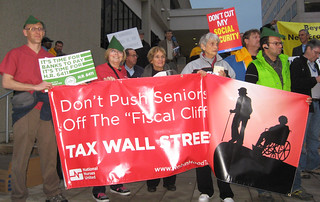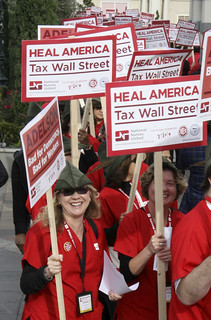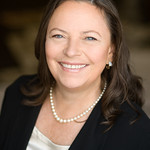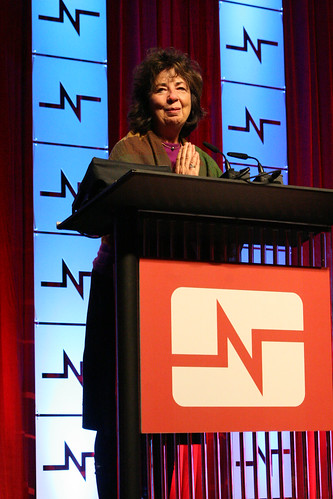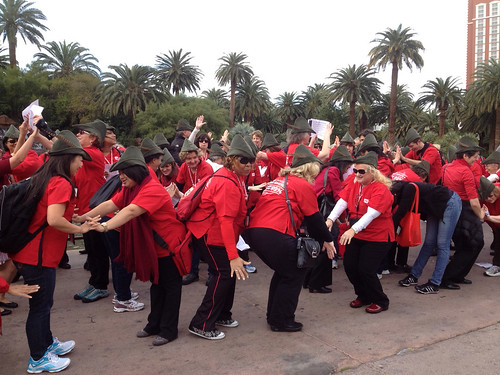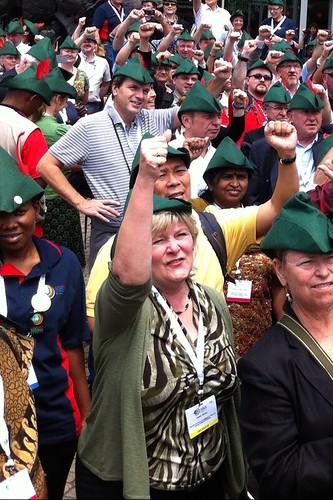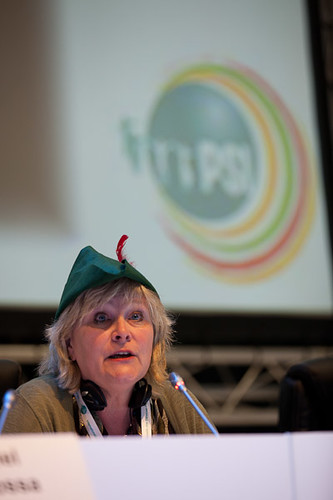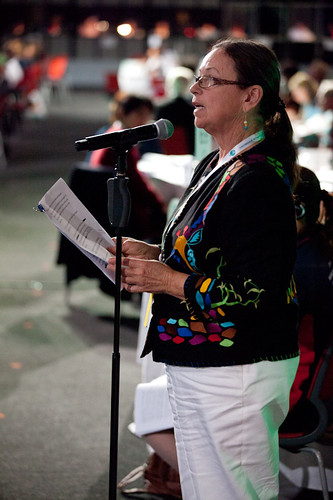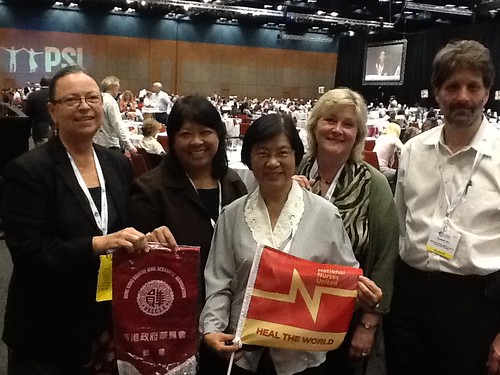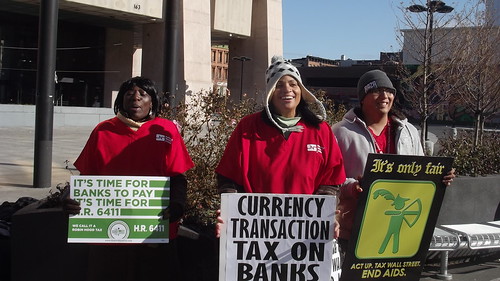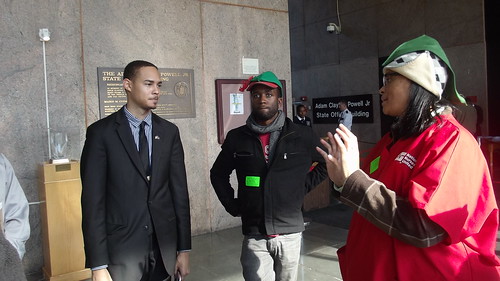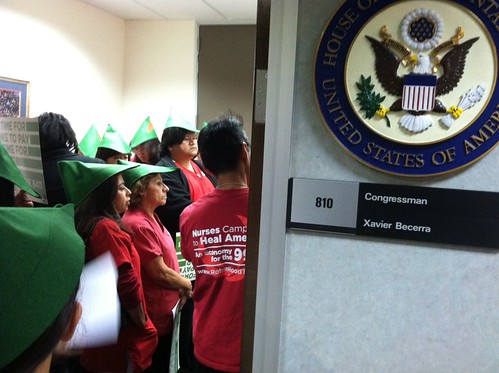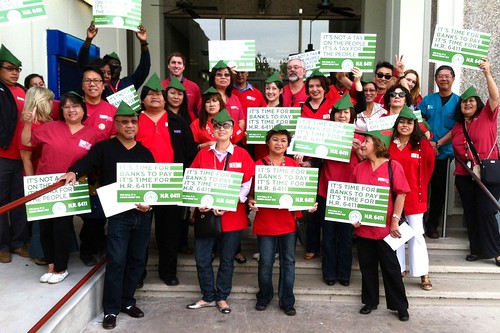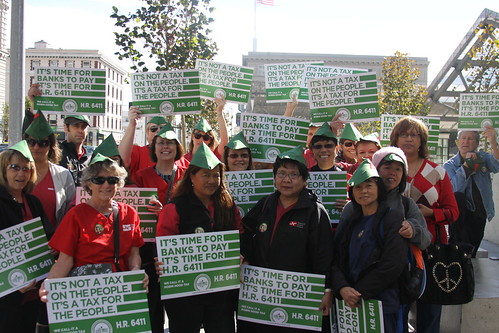By RoseAnn DeMoro, Executive Director of National Nurses United
Article from National Nurse Magazine – November 2012 Issue
If there was ever a critical moment for building a powerful, effective movement of all registered nurses to protect the interests of patients and nurses, that time has surely come. Here are 101 reasons for RN unity. All reflect the way in which nurses, their patients, practice, families, and communities are under attack. Let’s call this a partial list. Add your own reasons. I welcome your thoughts.
1. Budget-driven short staffing, regardless of patient need
2. Erosion of RNs’ ability to practice in the exclusive interest of patients rather than maximizing profits
3. Misleading “patient satisfaction” goals that substitute budget-driven scripting and rounding for actual care
4. Time spent on the caring process considered “non-productive” time
5. Needed patient services cut based on corporate business models to increase profit margins
6. “Evidence-based” medicine eroding care based on individual patients’ needs
7. Hospitals cutting back on basic equipment and supplies needed to provide good care
8. RNs being required to float to specialty units without proper clinical expertise or orientation
9. Replacement of specialist RN care with generalist RN care
10. Efforts to roll back California’s nurseto- patient ratio law
11. Hospital industry’s nationwide campaign against nurse-to-patient ratios
12. Medical redlining, i.e. hospitals cutting services for lower-income patients and communities
13. Long waits for emergency care
14. Patients being shifted from hospitals to outpatient and home settings where care is provided by non-RNs or family members
15. Laws and regulations that sacrifice patient safety to the bottom line and erode RN practice
16. Lack of protection for non-union RNs who advocate for better patient care
17. Deskilling of the nursing process by routinizing it, i.e. by fragmenting and standardizing it
18. Standardized clinical protocols that limit RN judgment
19. Manipulation of hospital census numbers to short staff and reduce RN hours
20. Speed-up through understaffing
21. RNs being denied meal and rest breaks via short staffing and manager coercion
22. Support staff cuts
23. Mandatory overtime
24. Attacks on RNs’ hard-won scheduling options
25. Increased employer discipline of nurses on pretexts
26. Exposure to antibiotic-resistant and other hospital-acquired infections
27. Hospitals failing to provide protective equipment or inform nurses of exposure to infected patients
28. Unsafe lift policies and other hazardous working conditions that increase injuries
29. Employers’ failure to enact measures to protect staff and patients from workplace violence
30. Lack of mentorship for new RNs
31. Lack of protection for non-union RNs who blow the whistle on unsafe hospital conditions or billing fraud
32. Crises of conscience for nurses unwilling to work in unsafe settings
33. Nurses leaving the profession due to stress, burnout, or employer-created hostile environment
34. Increased management control through workplace surveillance technologies
35. Surveillance of nurses’ use of social media, such as Facebook and YouTube
36. Use of information technology to displace RNs and override RN professional judgment
37. Technology-driven speed-up
38. Use of information technology to downgrade patient acuity to justify short staffing
39. Electronic charting that forces the RN to focus on a computer rather than on the patient
40. Telemedicine displacing hands-on patient care
41. Medical errors caused by electronic medical record systems and other health information technologies
42. RNs being scapegoated for medical errors actually caused by technology
43. Employers’ isolation of individual RNs through technology adoption and other tactics, undermining senses of unity and community
44. Loss of institutional memory of what nursing was prior to the advent of health IT and other management innovations
45. Federal government tying reimbursement to adoption of health information technology
46. Cuts in or elimination of employerpaid pensions (defined-benefit plans)
47. Employers eliminating health benefits or reducing them by increasing outof- pocket costs, among other changes
48. Reduction of sick leave so nurses are forced to work when sick, a risk to themselves and patients
49. Employers not paying overtime
50. Two-tier wage and benefit structures that pit new RNs against more experienced RNs
51. Reductions in paid continuing education leave for RNs
52. Unpaid hospital internships and preceptorships
53. Attacks on RNs’ hard-won seniority rights
54. Loss of contract-based due process and freedom of speech rights in the workplace
55. Lack of protection against unjust firing or other discipline for non-union RNs
56. Multi-tier healthcare system based on ability to pay
57. Skyrocketing insurance premiums, co-insurance, co-pays, and deductibles
58. Hospitals and physicians making medical decisions based upon insurance coverage
59. Poorer health barometers (such as lower life expectancy) than countries with national health systems
60. Patients delaying preventive care or necessary treatment due to high cost, leading to medical complications
61. Hospital price gouging, billing additional charges for labs, services, and personnel, often without advance patient consent
62. “Non-profit” hospital chains exploiting tax-exempt status for financial gain that vastly exceeds what they provide in community benefits or charity care
63. Medical credit screening being used to track patients based on ability to pay, including requiring advance payment from those least able to pay
64. Healthcare tourism, i.e. patients going out of the county for care 65. Federal government tying reimbursement to “patient satisfaction” scores
66. Hospitals subcontracting travel nurses from outside companies rather than employing RNs directly
67. Increased mergers and acquisitions by big corporate hospital chains resulting in fewer independent and locally-controlled hospitals
68. Hospital and emergency room closures 69. Privatization of public health facilities and services
70. Profitable hospital units being moved to independent medical specialty centers to extract concessions from unions based on budgetary considerations or to justify closing a hospital completely
71. Establishment of for-profit non-acute medical specialty centers to increase profits by evading public oversight
72. Private equity firms buying hospitals to squeeze them for profits, then leaving them drowning in debt
73. Inadequate funding for county and state hospitals and clinics
74. Private hospitals dumping low-income patients on underfunded public hospitals
75. Nurse executive organizations claiming to speak and legislate on behalf of directcare RNs
76. “Nurse leaders” disdainful of directcare nursing
77. Differentiated practice and ANA campaign for requiring BSNs
78. State nursing boards being stacked with employer representatives to reverse RN licensure and practice protections
79. Push for national Compact State Licensure to lower standards for all RNs to lowest state requirements
80. Expansion of scope of practice for LVNs/LPNs and unlicensed staff at the expense of RN scope and jobs, as well as patient safety
81. Layoffs and hiring freezes dictated by budget goals, not patient need
82. Hospitals trying to erode the public’s trust in RNs with ad campaigns attacking RNs as overpaid or unreasonable
83. Loss of collective voice through erosion of union rights
84. Non-RN unions seeking to represent RNs, resulting in low priority for RN practice and workplace needs
85. Weak and partner healthcare unions undermining RNs by accepting concessionary contracts
86. Cuts in nursing programs and reduced access for low-income nursing students
87. Private nursing education increasing debt for new RNs
88. Unemployment among nursing school graduates
89. Corruption of the democratic process by corporate/wealthy spending on lobbying and elections
90. Elimination of public regulatory oversight
91. Nurses supporting extended family members due to the economic crisis
92. Declining health due to economic crisis job loss, home foreclosure, high medical bills, and poor nutrition
93. Environmental degradation increasing preventable illnesses
94. Budget cuts for Medicaid and public health programs
95. Campaigns to cut and privatize Medicare and Social Security
96. Deep, widespread cuts in mental health services
97. Anti-union “right-to-work” laws being extended to more states
98. Weak labor law penalties for employers who violate worker rights
99. Growth of healthcare anti-union industry, including management attorneys, consultants, and strike replacement firms
100. Prevalence of labor-management partnerships in which unions advocate for employers and against the interests of workers and the public
101. Lack of nurses and women generally in leadership roles
